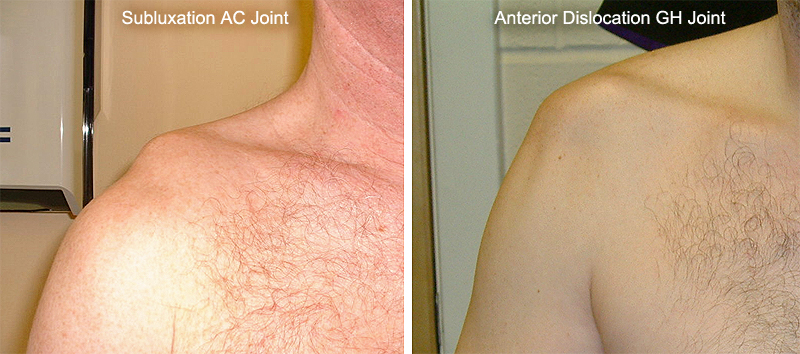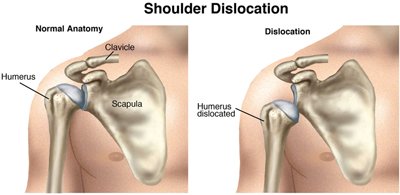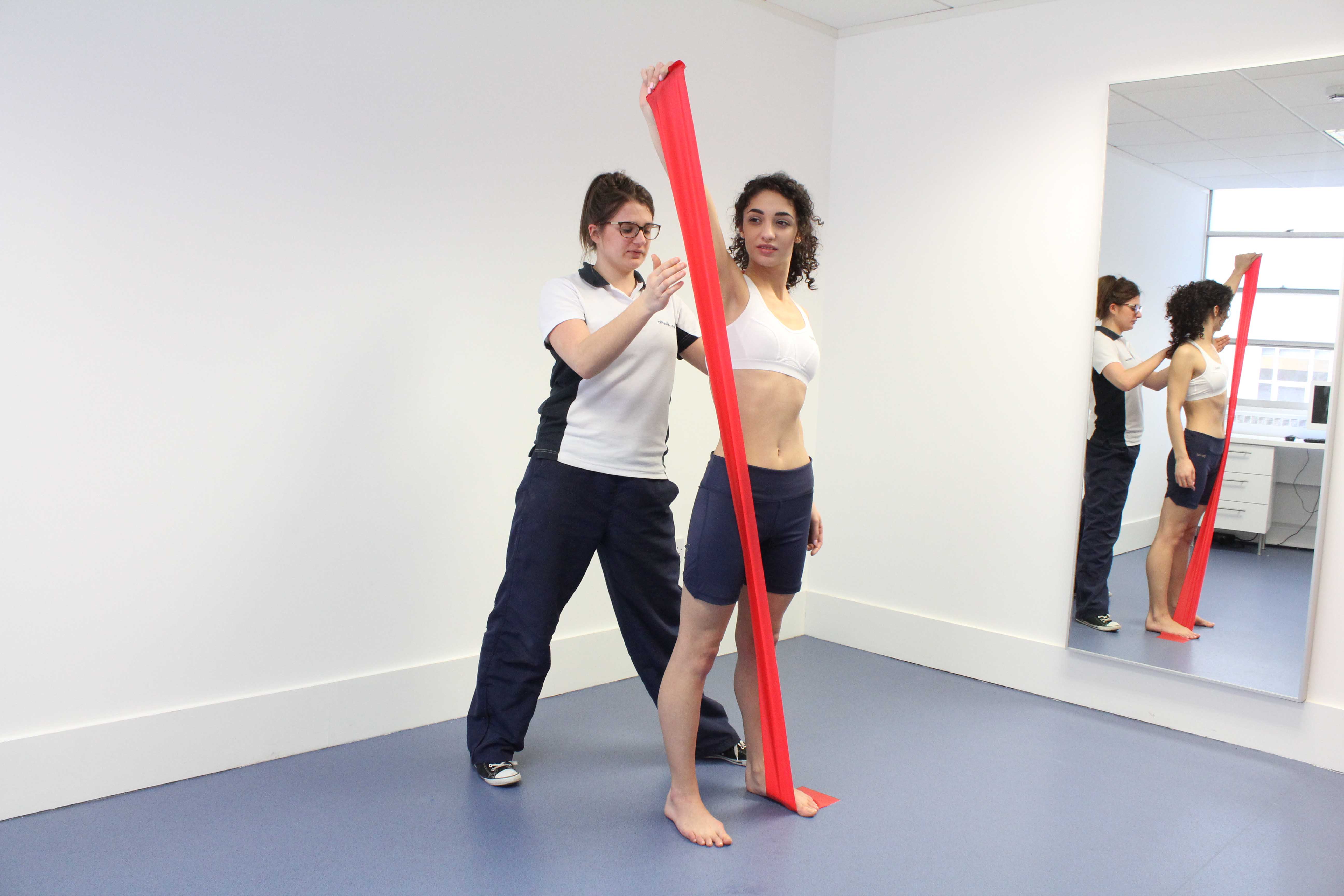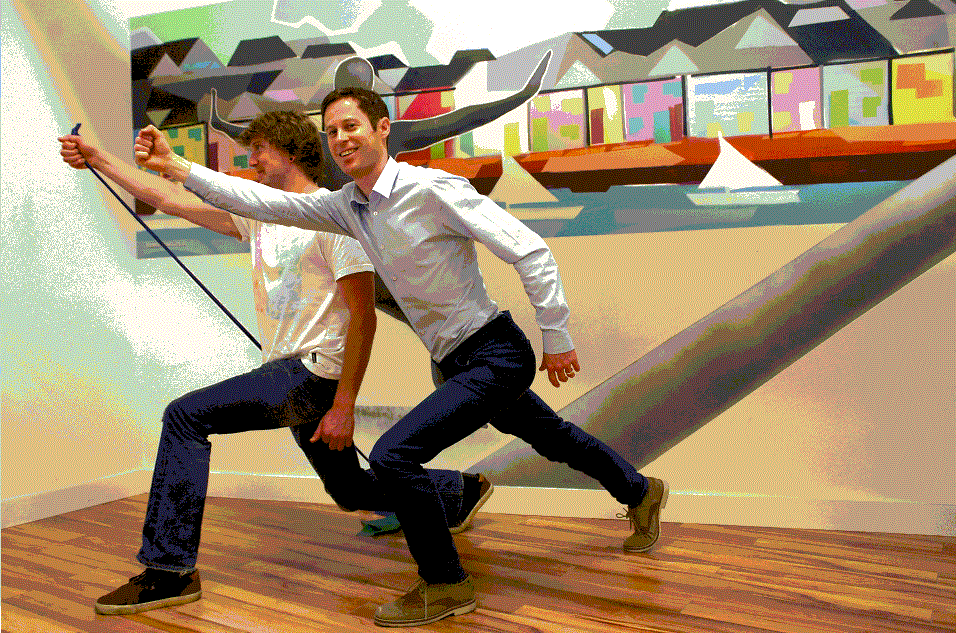nalco group
bone, muscle & joint pain physio
BOOK NOW / WHATSAPP ABOUT YOUR PAIN OR INJURY
- NOVENA 10 Sinaran Drive, Novena Medical Center #10-09, Singapore 307506
- TAMPINES 9 Tampines Grande #01-20 Singapore 528735
- SERANGOON 265 Serangoon Central Drive #04-269 Singapore 550265
Home > Blog > Physiotherapy > Shoulder Pain > Shoulder Dislocation Physiotherapy
Shoulder Dislocation Physiotherapy

Our shoulder is the most mobile joint in the body and unfortunately...it is the most likely joint to dislocate. A dislocation is the separation of 2 bones where they meet at a joint.
Shoulder dislocations most often occur during contact sports, but everyday accidents, such as falls, also can cause the joint to dislocate. Athletes, nonathletes, children, and adults - anyone in particular - can all dislocate their shoulders.
A dislocated shoulder usually requires the assistance of a health care professional to guide the joint back into place. After the joint is realigned, our senior physiotherapist s directs the rehabilitation of the shoulder, and helps the affected individual prevent reinjury.
CAUTION: A shoulder dislocation requires immediate medical attention, especially if you experience:
- Numbness in your arm or hand
- Discoloration of your arm or hand
- A feeling of coldness in your arm
Any of these conditions may indicate injury to a nerve or blood vessel. Seek medical help immediately.
first of all, What is a Shoulder Dislocation?
Our shoulder comprises of and includes the
- clavicle (collar bone)
- scapula (shoulder blade)
- and humerus (upper-arm bone)
The rounded top of the humerus and the cup-like end of the scapula fit together like a ball and socket. A shoulder dislocation can occur with an injury, such as when you "fall the wrong way" on your shoulder or outstretched arm, forcing the shoulder beyond its normal range of movement and causing the humerus to dislocate out of the humeral socket.
Shoulder dislocations can result in damage to many parts of the shoulder, including
- the bones
- the ligaments
- the labrum (the ring of cartilage that surrounds the socket)
- and the muscles and tendons around the shoulder joint

Joints may dislocate when a sudden impact causes the bones in the joint to shift out of place. Shoulder dislocations are among the most common traumatic injuries affecting the shoulder.
How Does a shoulder dislocation Feel like?
With most shoulder dislocations, you will feel the humerus coming out of the socket, followed by:
- Pain
- Inability to move the arm
- Awkward appearance of the shoulder
If you have any signs or symptoms of a nerve or blood-vessel injury, as listed above, seek immediate medical attention.
The humerus usually remains out of the socket until a doctor guides it back into place. X-rays are routinely taken after the dislocation is moved back into place to make sure that you don’t have a fracture.
Occasionally, the shoulder may go back into place on its own.
Sometimes patients might not even realize that they had dislocated their shoulder; they may only feel that they had injured their shoulder. If you have injured your shoulder and have pain, seek medical attention.
how our senior physiotherapists can help
After the dislocated humerus has been moved back into position (relocated), your arm will be placed in a sling to protect you from reinjury and to make your shoulder more comfortable.
We can review your
health and injury history and conduct a physical examination to
determine your rehabilitation needs. Based on the results of the
examination and your goals, we will guide you
through a rehabilitation program to restore your shoulder
- mobility
- strength
- joint awareness
- and sport-specific skills
We also will show you how to control your pain and relieve any inflammation.
Your shoulder physiotherapy treatment program may include:
Range-of-motion exercises
Swelling and pain can reduce your shoulder movement.
We will teach you how to perform safe and effective exercises to restore full range of motion to your shoulder. We might apply manual (hands-on) therapy to help decrease pain in the shoulder.

Pain Management
Our senior physiotherapists may use the following modalities for pain relief
- heat therapy
- cold therapy
- dry needling
- ultrasound therapy
- radio-frequency Indiba physiotherapy
- manual therapy
- deep tissue release
- stretching exercises
Strengthening exercises
Poor muscle strength can cause the shoulder joint to remain unstable and possibly reinjure it or have another shoulder dislocation.
Based on how severe your injury is and where you are on the path to recovery, we can determine which strengthening exercises are right for rehabilitation of your shoulder.
Joint awareness and muscle retraining
Specialized exercises help your shoulder muscles relearn how to respond to sudden forces. We will design individualized exercises to help you return to your regular activities.
Activity- or sport-specific training
Depending on the requirements of your job or the type of sports you play, you might need additional rehabilitation tailored to the demands your activities place on your shoulder. We can develop a program that takes all of these demands (as well as your specific injury) into account.
For example, if you are an overhead thrower, such as a baseball pitcher, we will guide you through a throwing progression and pay specific attention to your throwing mechanics.
Shoulder Dislocation: Treatment After Surgery
Following shoulder stabilization surgery, your affected arm will be placed in a sling, usually for 4 to 6 weeks. During this time, you will not be allowed to use your arm for everyday activities.
Right after surgery, your shoulder will be painful and stiff, and it might swell. Your health care team will provide you with methods to control pain and swelling, such as cold therapy and training on proper positioning.
Our senior physiotherapists will guide you through your postsurgical physiotherapy.
We will design a specialized treatment program based on your condition and goals. Shoulder physiotherapy treatments may range from
- gentle range-of-motion
- strengthening exercises
- to activity- or sport-specific exercises
The timeline for your recovery will vary, depending on the surgical procedure and your general state of health, but a full return to sports, heavy lifting, and other strenuous activities might not begin until 4 to 6 months after surgery.
CAUTION: Your shoulder will be very susceptible to reinjury. It is extremely important to follow the postoperative instructions provided by your surgeon and physical therapist.
Shoulder physiotherapy after your shoulder surgery is essential to restore your shoulder’s function.
Your rehabilitation typically will be divided into 4 phases:
Phase I (maximal protection).
This phase lasts for the first few weeks after your surgery, when your shoulder is at the greatest risk of reinjury. Your arm will be placed in a sling, and you likely will need assistance or special strategies to accomplish everyday tasks, such as
- bathing
- dressing
- meal preparation
- eating
- etc
We will teach you gentle range-of-motion and very light strengthening exercises using only the weight of your arm. We may provide manual hands-on techniques, such as gentle massage, to help
and we will offer advice on how you can reduce your pain.
Cold therapy, ultrasound therapy, radio-frequency Indiba physiotherapy or electrical stimulation also may be applied for pain relief. Some of the treatments begun in this phase may continue as needed, until approximately the 12-week mark.
Phase II (moderate protection).
This phase typically begins about 1 month following surgery, with the goal of restoring mobility to the shoulder.
You will reduce the use of your sling, and your range-of-motion and strengthening exercises will progressively become more challenging throughout this period. In the early parts of this phase, strengthening will not include extra resistance; that will be included at a later point in your rehabilitation.
We will add exercises to strengthen the "core" muscles of your trunk and shoulder blade (scapula), and your "rotator cuff" muscles—the ones that provide additional support and stability to your shoulder. You will be able to begin using your arm for daily activities, but you'll still avoid any heavy lifting with your arm both during physical therapy and at home.
We may use special joint mobilization techniques during this phase to help restore your shoulder's range of motion. With clearance from your surgeon, you may begin light cardiovascular activities, such as riding a stationary bike or walking on a treadmill.
Phase III (return to activity)
This phase will typically begin about 3 months after surgery, with the goal of restoring your strength and joint awareness to equal that of your other shoulder. At this point, you should have full use of your arm for daily activities, but you will still be unable to participate in activities such as sports, yard work, or physically strenuous work-related tasks.
We will increase the difficulty of your exercises as you progress. You might be able to start a modified weight-lifting or gym-based program during this phase.
Phase IV (return to occupation/sport)
This phase will typically begin about 4 months after surgery with the goal of helping you return to sports, work, and other higher-level activities. We will instruct you in activity-specific exercises to meet your needs. For certain athletes, this may include throwing and catching drills.
For others, it may include practice in lifting heavier items onto shelves or instruction in raking, shoveling, or housework. We also might recommend a shoulder brace to allow you to gradually and safely return to your regular activity level without reinjury.

Can this Injury or Condition be Prevented?
Shoulder dislocation may be preventable. See our senior physiotherapists if you:
- Have pain in your shoulder, especially when performing forceful activities, such as throwing a ball or lifting objects overhead
- Have symptoms that feel as though your shoulder is “slipping," “shifting,” or “moving”
- Hear a popping sound in your shoulder
We can guide you through strengthening exercises and special drills to improve the ability of your shoulder muscles to respond to forceful physical demands as needed. If you are at risk for shoulder dislocation, we can show you positions to avoid to help prevent shoulder injury.
The riskiest position is that of raising the arm overhead while it’s rotated outward, as happens with overhand throwing.
Our senior physiotherapists help people modify their movements to avoid this position, or teach pitchers and other athletes strengthening exercises and correct body mechanics to lessen the chance of injury.
